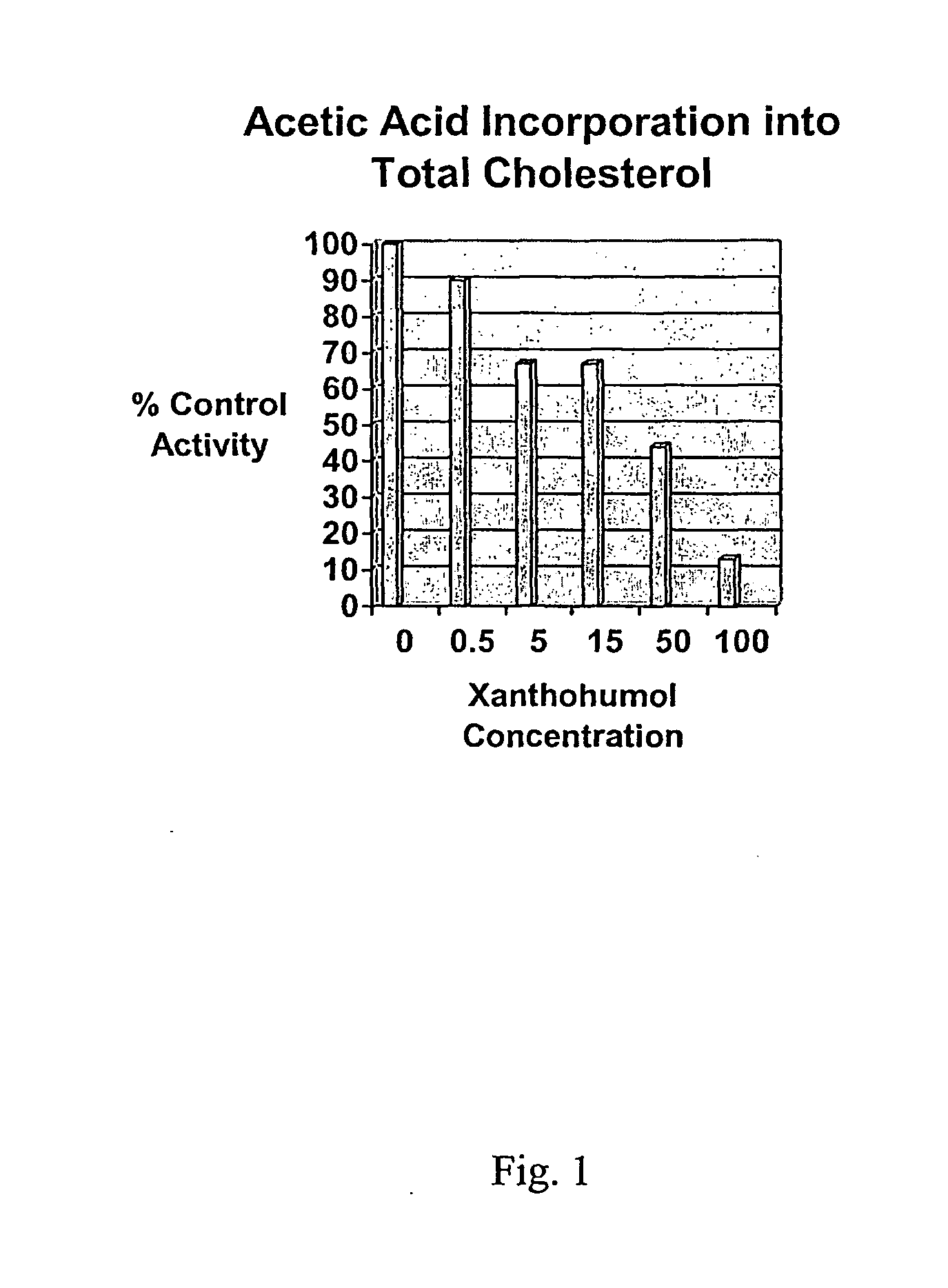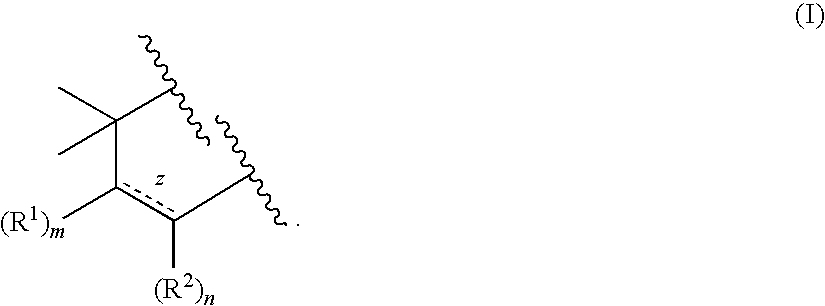Prenylflavonoid Formulations
- Summary
- Abstract
- Description
- Claims
- Application Information
AI Technical Summary
Benefits of technology
Problems solved by technology
Method used
Image
Examples
example 1
[0101]Water soluble compositions of xanthohumol were formulated containing the non-ionic surfactant macrogolglycerol hydroxystearate. By heating and stirring this polyoxyl castor oil with a powdered xanthohumol extract (containing in excess of 20% xanthohumol by weight), a clear greenish viscous solution was formed containing dissolved xanthohumol (hereinafter referred to as “xanthohumol gel formulation”) a clear greenish viscous solution was formed containing dissolved xanthohumol. The powdered xanthohumol extract consisted of 20% xanthohumol, small amounts of chlorophyll, and uncharacterized residual resins, but did not contain any alpha acids, beta acids, or 8-prenylnaringenin. The xanthohumol gel formulation consisted of macrogolglycerol hydroxystearate 40 (100 ml) and powdered xanthohumol extract (10 grams), representing a ratio of surfactant:prenylflavonoid of 10:1.
[0102]An aqueous solution of solubilized xanthohumol was achieved by adding water to the xanthohumol gel formulat...
example 2
[0103]HMG-CoA reductase assays were performed in which increasing concentrations of xanthohumol (1 μM to 100 μM) were added to isolated liver microsomes. Xanthohumol had no effect on HMG-CoA reductase activity. As a positive control, atorvastatin (10 nM and 1 μM) was tested in the same assay, which inhibited reductase activity by 58% and 87% respectively. The protocol followed was as published in Telford et al. ATVB 2002; 22: 1884-1891.
[0104]The incorporation of 14C-acetic acid into cholesterol was examined in HepG2 cells. No affect was observed for this parameter for concentrations of xanthohumol below 500 nM. Above this concentration, cholesterol synthesis was inhibited in a dose-responsive manner (0.5 μM to 100 μM). See FIG. 1. The IC50 was approximately 20 μM. In the same HepG2 cell assay system, atorvastatin (10 nM and 1 μM) inhibited acetate incorporation into cholesterol by 20% and 80% respectively.
example 3
[0105]The solubility of the powdered xanthohumol extract in pH 7.4 Hank's Balanced Salt Solution (10 mM HEPES and 15 mM glucose) was compared to the xanthohumol gel formulation. At least 1 mg of powdered xanthohumol extract or 100 mg of xanthohumol gel formulation was combined with 1 ml of buffer to make a ≧1 mg / ml powdered xanthohumol extract mixture and a ≧1 mg / ml xanthohumol gel formulation mixture, respectively. The mixtures were shaken for 2 hours using a benchtop vortexer and left to stand overnight at room temperature. After vortexing and standing overnight, the powdered xanthohumol extract mixture was then filtered through a 0.45-μm nylon syringe filter (Whatman, Cat# 6789-0404) that was first saturated with the sample.
[0106]After vortexing and standing overnight, the xanthohumol gel formulation mixture was centrifuged at 14,000 rpm for 10 minutes. The filtrate or supernatant was sampled twice, consecutively, and diluted 10, 100, and 10,000-fold in a mixture of 50:50 assay b...
PUM
| Property | Measurement | Unit |
|---|---|---|
| Percent by mass | aaaaa | aaaaa |
| Percent by mass | aaaaa | aaaaa |
| Mass | aaaaa | aaaaa |
Abstract
Description
Claims
Application Information
 Login to View More
Login to View More - Generate Ideas
- Intellectual Property
- Life Sciences
- Materials
- Tech Scout
- Unparalleled Data Quality
- Higher Quality Content
- 60% Fewer Hallucinations
Browse by: Latest US Patents, China's latest patents, Technical Efficacy Thesaurus, Application Domain, Technology Topic, Popular Technical Reports.
© 2025 PatSnap. All rights reserved.Legal|Privacy policy|Modern Slavery Act Transparency Statement|Sitemap|About US| Contact US: help@patsnap.com



